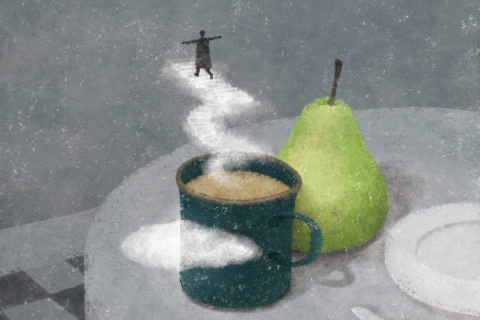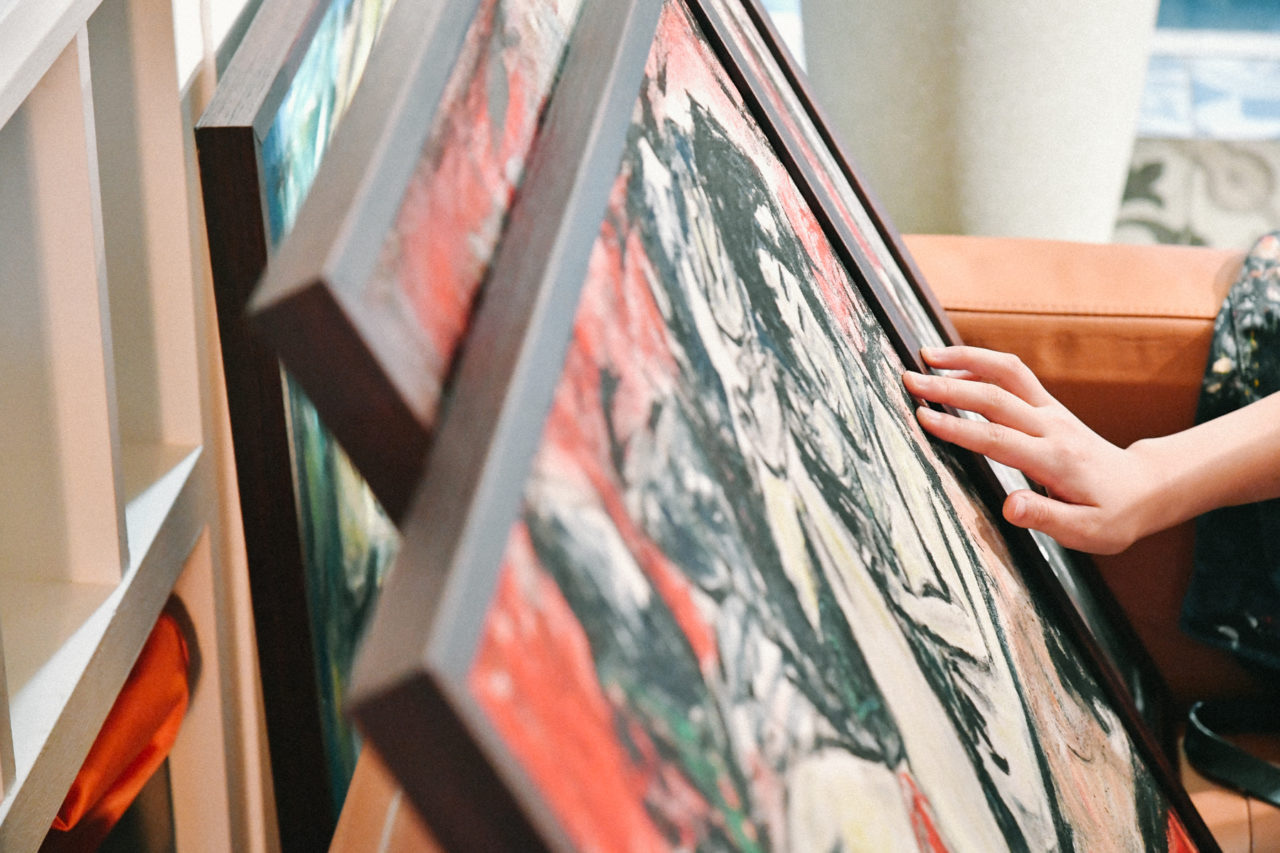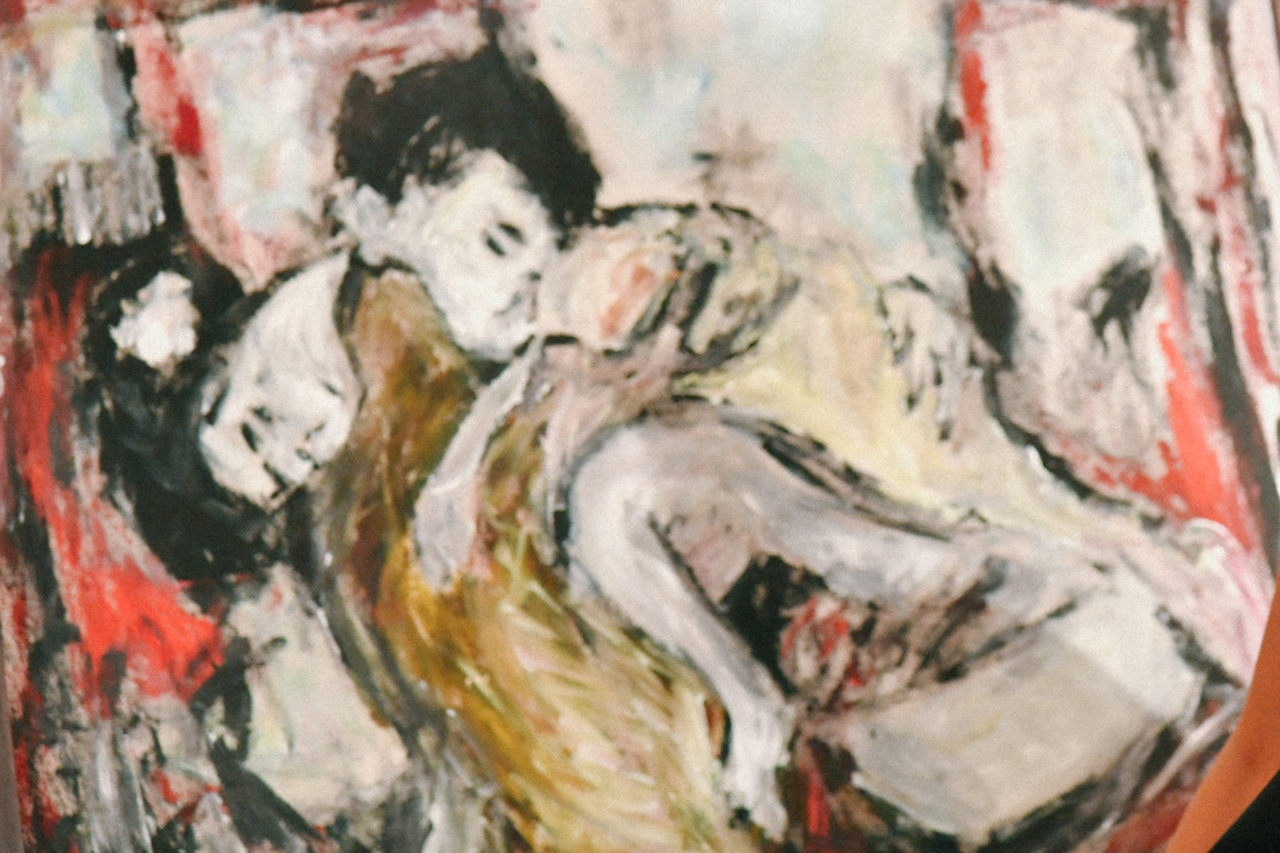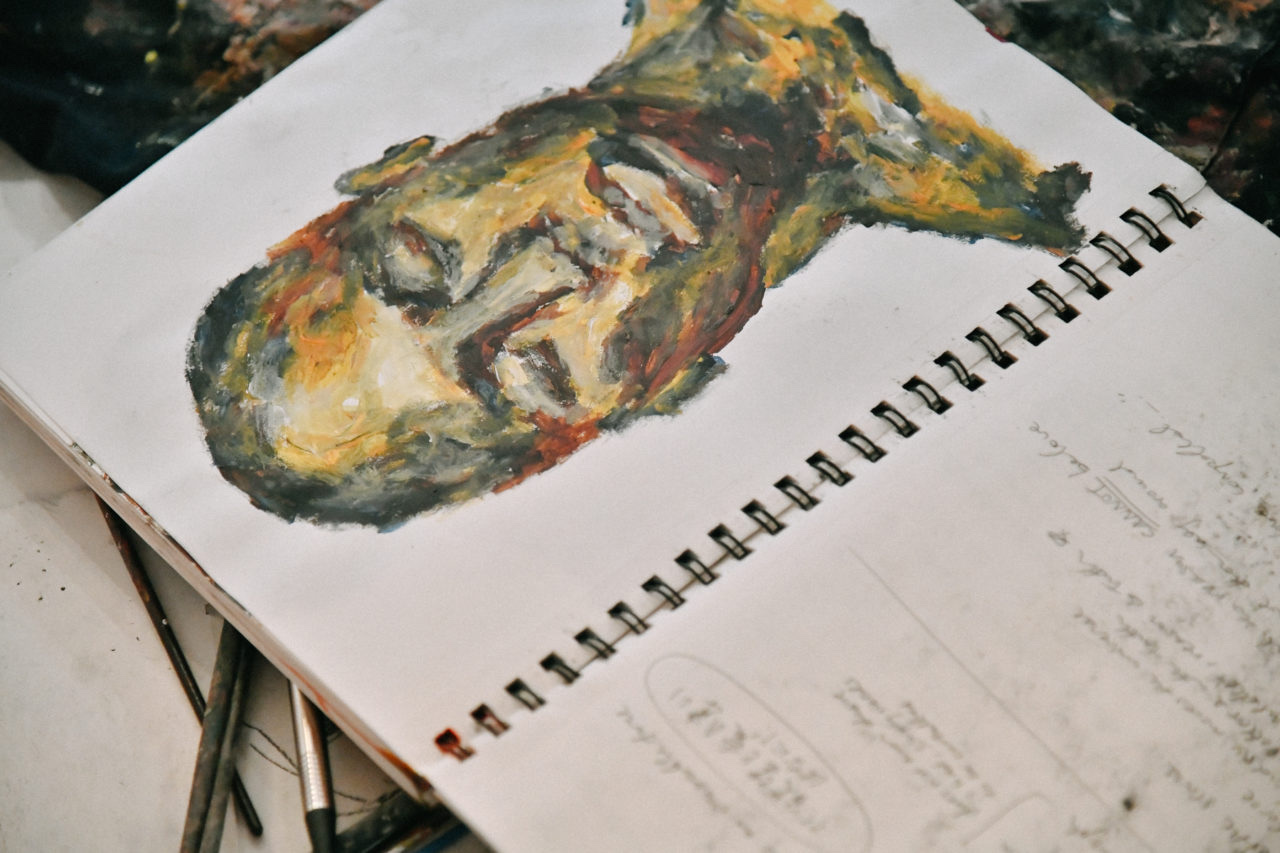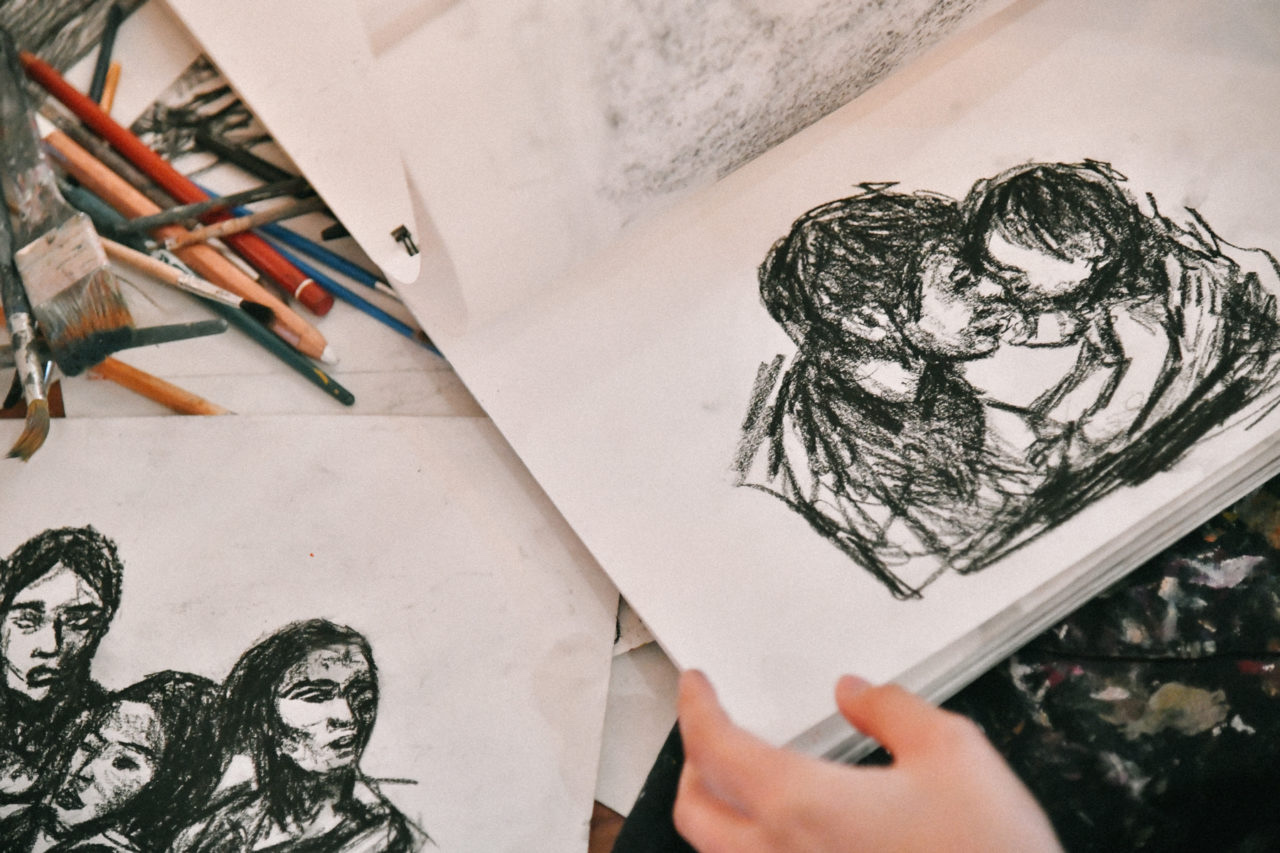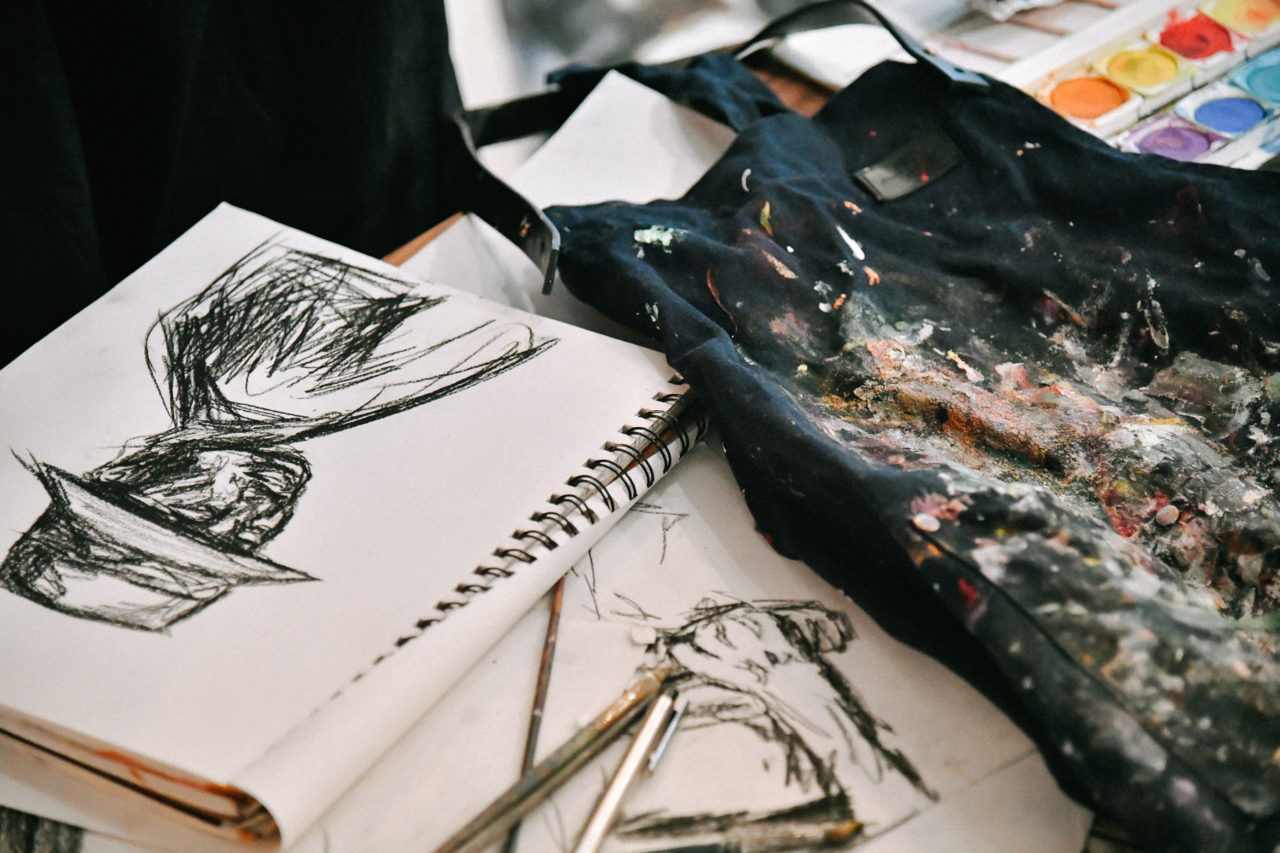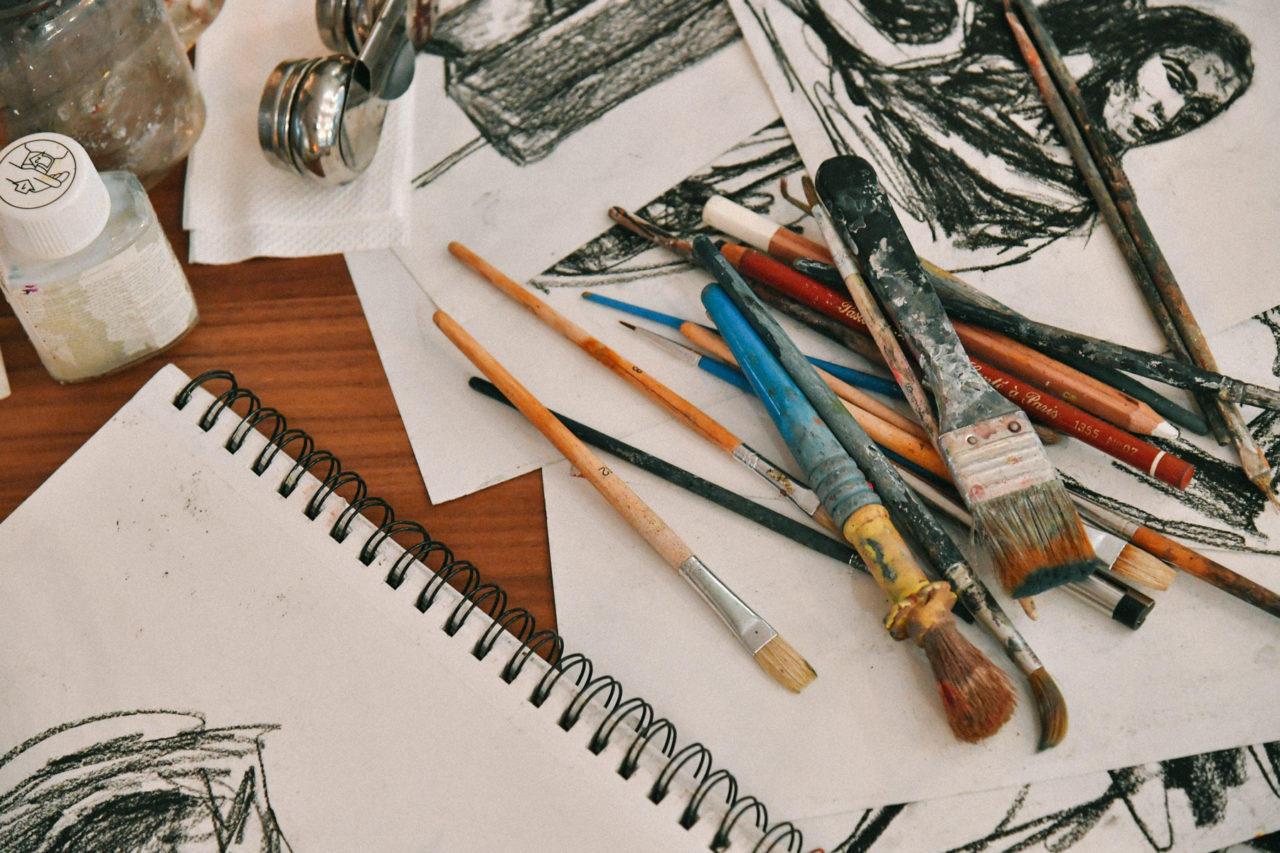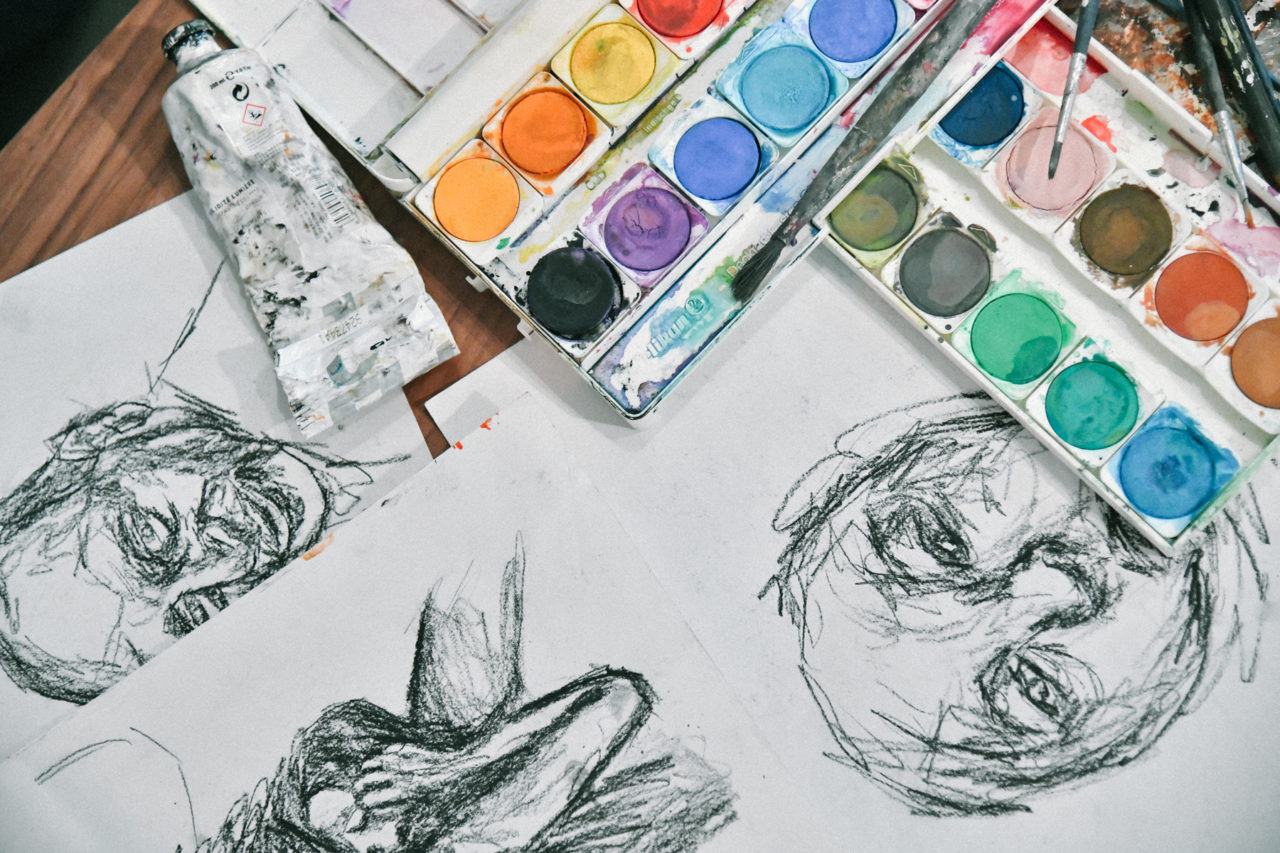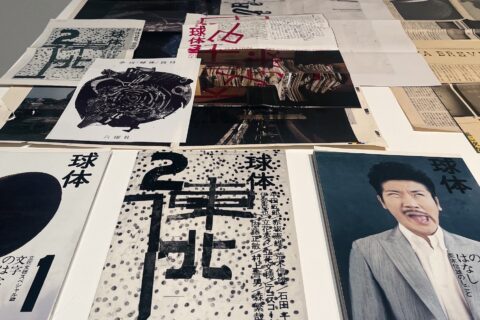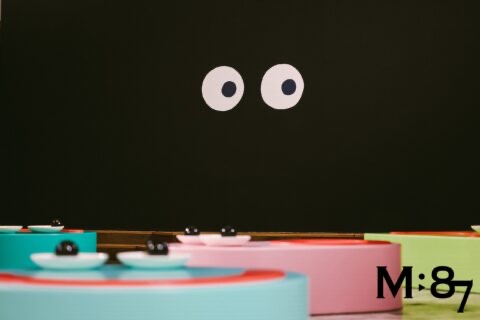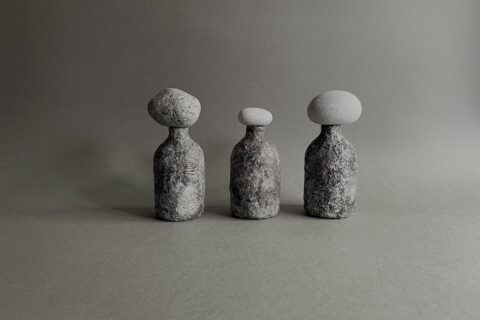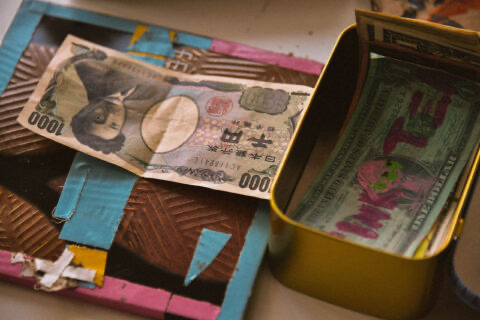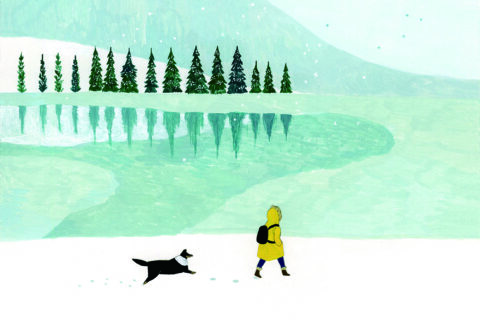走進位於上環善慶街的The Wild Lot,沿著狹窄的樓梯走上的閣樓,私密舒適的感覺猶如走進別人的家,數幅油畫放在沙發旁,草圖、畫具、顏料和素描簿雜亂無章地散落在地上、茶几上、窗台上。西山瑞貴(Mizuki Nishiyama)穿著黑色的長裙,徐徐地走來介紹自己。已接受過不少訪問的她,微笑裡仍顯得有點緊張。今年6月時西山在中環的白石畫廊首次舉辦香港的個人展覽《SHUNGA》(春畫),令人們對春畫有了別的想像。「我喜歡討論人性內心深層的一面,人們來看展覽,也許會想:『她在在畫性呢!』,不,這不是我在做的事。雖然《SHUNGA》的靈感是來自日本古代木版情色畫,但我的創作與性無關,畫中使用了深沉樸素的色調、粗糙的線條、黑色的筆觸,以抽象的風格呈現人與人之間的親密與人性的脆弱。」《SHUNGA》是西山瑞貴在紐約的展覽《An Exploration of Human Fragility: Love and Lust》的延續,是身份的探索,也是她對親密的理解。
在《Love and Lust》系列裡,西山瑞貴以意大利詩人但丁的《神曲》裡的煉獄為靈感,探討愛與慾如何模糊了真實與幻想之間的邊界,並藉此研究人類的身體,如何扭曲、重疊、擁抱和觸碰。《SHUNGA》系列中,西山最喜歡的作品之一《Dakko》就是演繹這親密的擁抱和觸碰。「Dakko在日本語的意思是擁抱,是孩子來臨世界時第一個學會的字語。當小孩感到害怕、疲累時,父母便會擁抱著孩子說:『Dakko,Dakko』,讓小孩從親密中感到舒適、安慰。」畫裡的人穿著和服,纏綿的擁抱、無辜的眼神,人和背景幾乎融為一體。「我相信一些使我脆弱的東西,也使我變得更有人性。我們都經歷過掙扎、經歷高潮與低潮,甚麼令你感到自在、甚麼推動你前進、甚麼讓你失望,這一切都是自我覺察,是成長的一部分。」人在親密關係裡,或許會變得更脆弱,或許是更願意表現自己的脆弱。西山喜歡分析自己的想法來加強覺察自己、別人和環境的能力,她相信必須以謙虛和脆弱的方式對待生活才能擁有這種覺察力。
自小受到藝術的薰陶,西山瑞貴的媽媽、祖母和祖叔父都是畫家,他們各自使用不同的媒介來創作,祖母擅於使用天然岩絵具(tennen iwa enogu)來繪畫日本画(Nihonga),祖叔父是畫水彩畫的,媽媽則是油畫。「小時候看他們畫畫,在媽媽工作室裡常常嗅到天拿水的味道。爸爸是從事時裝的工作,使我有機會接觸布料的質感;還有他是玩音樂的,讓我自小便認識不同的音樂。這些成長經驗讓我能通過各類型的藝術去表達自己,彷彿成為了我的第二種語言。我也會和媽媽一起畫畫,但我們都是不太習慣與別人共用畫室的人,我也羞於向別人展示正在做的東西。我和她的風格很不一樣,她喜歡畫風景、抽象的畫,她會花幾個月的時間來畫一些筆觸,而我則比較沉迷於繪畫人體。」港日混血兒西山瑞貴在香港、日本和意大利的傳統文化中成長,懂得6種語言的她,笑言自己也有多種個性。「在不同的文化裡成長,我的個性也會隨著我使用的語言而轉變。在日本時,我會表現得有點矜持,但我的說話會比較進取一點,大概是潛意識裡想表現自己有很多的層次吧。紐約有一種讓人振奮、鼓舞人心的能量,我在那裡會比較放鬆自在。在香港的我會顯得比較安靜,這裡的舒適讓我能更細心地觀察這城市的美麗。我相信每個人也會有不同的面向,人的內心總是擁有著很多重的層次。」
「繪畫是自我的伸延,當畫筆沾上了顏料,就好像被賦予了一種能量,把經驗、情緒轉化,通過質感、顏色、線條和形狀等藝術的角度表現出來。這種轉化也是回應生活、自我實現的方式。」西山說她小時候夢想成為一位詩人,後來發現繪畫的多樣性讓她感到更完整。「我是一個很容易感到焦慮的人,而我的矛盾個性也影響著我的作品。生活裡一切讓人沮喪和敏感的地方,在某個觀點看來都只是一個過程。」脆弱不等於懦弱,也許要維持敏感、脆弱的心去面對世間的一切,比起武裝自己需要更大的勇氣,也承受著更多。痛苦、迷失的時候,想像它不過是一個過程,創作的、人生的,一切都是成長的過程。
The Wild Lot tucked away on Shin Hing Street in the Sheung Wan neighborhood. Taking the narrow steps up to its attic, a comfy and homey vibe welcomes you. There are paintings sitting neatly on the couch. Sketches, brushes, paints, and tools randomly scatter on the floor, coffee table, and windowsill. Mizuki Nishiyama, who dresses in a long black dress, slowly walks over to introduce herself. Although she has been in interviews before, she still appears a little nervous behind her smile. In June this year, Nishiyama held her first solo exhibition in Hong Kong at the Whitestone Gallery in Central. The exhibition, which is called SHUNGA (a Japanese term for erotic art), has given a brand new definition of erotic art. “I like to dig into the core of humanity. When people come to my exhibition, they might think, ‘She is painting about sex!’ But no, this is not what I am doing. Although inspiration are stemmed from Shunga, a traditional Japanese form of erotic art on woodblock print, my paintings have nothing to do with sex. What I really want to explore is human fragility and intimacy. For that, I’ve chosen to paint in abstract forms with a darker tone, rough lines, and black strokes.” SHUNGA can be seen as a continuation of Nishiyama’s previous New York exhibition, An Exploration of Human Fragility: Love and Lust, which focuses on the subjects of intimacy and identity search.
Inspired by Italian poet Dante Alighieri’s Inferno of Divine Comedy, Nishiyama’s Love and Lust is a collection of tempestuous artworks that blur the boundary between reality and fantasy, and also a study on human body in various forms, such as contortions, overlaps, embrace and touch. Being one of Nishiyama’s most favorite works in the SHUNGA series, Dakko further explores the idea of embrace and touch. “Dakko is the Japanese word for embrace. It is the first word that a child would learn after birth. When children feel scared and tired, parents would embrace them and say, ‘Dakko. Dakko.’ It soothes and comforts the child.” The abstract figures in the painting could be seen wearing Kimono and in embrace. They look innocent, and their entwined bodies blend into the background. “I think what makes me vulnerable also makes me more human. We’ve all been through ups and downs. Knowing what makes you feel at ease, what encourages you to move forward, or in contrary, what disappoints you is a process of self-awareness. That’s part of growing up” People tend to be more vulnerable in intimate relationships, or to be exact, they are more willing to show their vulnerable side. Nishiyama likes to analyze her own thoughts in order to build a higher self-awareness to herself, others and also the surroundings. She believes that in order to do so, a humbling and vulnerable approach to life must be taken.
Coming from a family of artists, Nishiyama grew up being immersed in various forms of art. Her mother, grandmother and granduncle are all painters. Each of them works with different mediums — her grandmother is a Japanese Nihonga painter who is particularly good at using natural mineral pigment (tennen iwa enogu in Japanese). Her granduncle paints with watercolor, and her mother paints with oil. “I often watched them paint when I was small. The smell of thinner would bring me back to my childhood because that was what my mother’s studio smelled like. My father worked in the fashion industry so I had a lot of opportunities to play with fabrics. My father is also a musician. I learnt a lot about music from him. My childhood experiences have shaped me into a person who can express herself through a whole variety of art. Art has become my second language. Sometimes I’d paint with my mother, but we are not the type who loves sharing a studio space with someone else. Plus I am a bit shy to show others what I’m working on. My style is very different from my mother’s. She is an abstract painter and loves painting landscapes. She’d spend a few months on a brush stroke. I am more obsessed with painting human bodies.” As a mixed Japanese artist of Japanese, Italian and Hong Kong heritage, Nishiyama speaks six languages and she jokes that she has multiple personalities too. “My personality changes as I switch between languages. When I am in Japan, I’d be more restrained; though the way I speak always betrays me as I could be quite aggressive. It’s probably because subconsciously I want to show people the different sides of me. New York is an uplifting and energetic place. I feel way more relaxed there. In Hong Kong, I am a quiet person. I feel at ease here and that allows me to take in the beauty of this city slowly and carefully. I believe that everyone has different aspects of their personality. There are so many layers of human complexity.
“Painting is an extension of self. Everytime I dip the brush in the paint, an energy is bestowed upon the brush to transform my experiences and emotions into various textures, colors, lines, and shapes. Painting is a way of responding to life and ultimately, making sense of my reality.” Nishiyama said that she dreamed of becoming a poet when she was a child, but over time, she realized that the dynamism of painting makes her feel complete. “I get anxious easily, and I have contradictory personalities that affect my works. The frustrating and sensitive aspects of life have taught me that everything is just part of the process.” Vulnerability is not a sign of cowardice. Being sensitive and vulnerable requires greater courage than simply arming up. When you suffer and feel lost, just remember that everything you come across is an opportunity to live.
